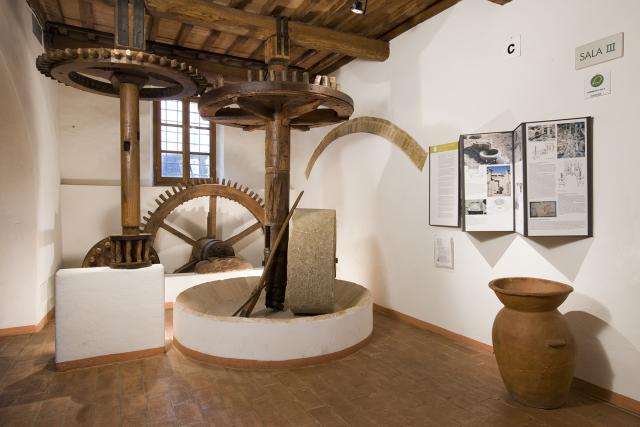Hydraulic-powered olive-press
MOO - Museum of Olives and Oil

Siena area
stone, wood and metal alloy
17th to 20th century
A channel diverts water to a vertically-installed waterwheel which is partly immersed in the mill race, in the same way a watermill to grind cereals is actioned. The rotary motion is transmitted into the olive-press machinery by a series of geared wheels used to control and reduce the rotation speed, thereby increasing its power.
After running through the gearing complex, the hydraulic power rotates the large post to which the which the heavy millstone is attached, causing it to turn around the stone basin into which the olives were poured grinding them into a paste from which the oil was filtered. The olive mill’s action could only be controlled by rediverting the supply of water to the waterwheel and emptying the mill race. The remains of a crest on the press indicate it may have belonged to a grange among the holdings of Siena’s famous Medieval hospital Santa Maria della Scala.